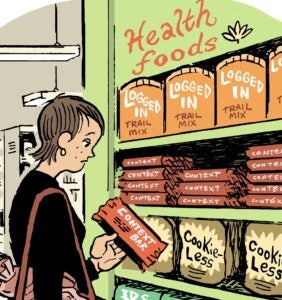 Jayne Pimentel is high on marijuana marketing – in particular using ad tech to support a budding industry.
Jayne Pimentel is high on marijuana marketing – in particular using ad tech to support a budding industry.
Pimentel, currently Reddit’s ad ops chief and formerly demand-side platform Turn’s director of emerging media, is also founder of CanX – an app designed to connect cannabis growers, product producers, dispensaries and consumers.
It uses anonymous registration data that lets producers see which products from which dispensaries are most popular. Consequently, they can market on a one-to-one basis to people on CanX.
“CanX is similar to programmatic, in that you can use data on the supply side,” Pimentel explained. “If you think of the producers as the supply side and the consumer as the demand, we’re trying to connect those pipes.”
Connecting those pipes using non-data-driven methods can be tough, as marketers will be thwarted by a complex set of regulations, which vary state by state.
“If you can’t advertise and you’re trying to reach a consumer, how do you do it? You have to rely on dispensaries to market,” Pimentel said.
Delaware and Vermont allow the use of medicinal marijuana but outlaw cannabis advertising completely. In states that have legalized recreational and medicinal use, marijuana marketers must stick to local campaigns, away from school zones, and are barred from advertising outdoors. No advertising is permitted in states where marijuana is criminalized.
Across all states, the most restrictive guideline requires that 70% of a marijuana marketer’s audience be 21 years of age or older. Colorado, for example, lets marijuana businesses place ads in newspapers, on the radio and on television – so long as firms can provide “reliable evidence” that the audience is of legal age. But providing that evidence can be a huge headache.
“The reality is that you can’t verify that an audience is of age,” said Eric Layland, founder and senior strategist at Canna Ventures, a cannabis industry marketing services firm. “You can make some accommodations and target publications that have a splash page to verify that users are over 21. But there’s no way to police that.”
Because marijuana marketing must be so data-driven, Olivia Mannix, co-founder of marijuana marketing agency Cannabrand, says digital and PR are the best ways to promote cannabis brands. “You don’t have the same restrictions as in print or on TV,” she said.
Cannabrand works with Brightfield Group Cannabis Market Research, a research firm that mines cannabis consumption data, to inform its digital campaigns.
“We can hone in to different markets to figure out consumer profiles and what type of products they’re interested in,” Mannix said.
As with more traditional verticals, this data can help product development.
Producers can use CanX data to build customer segments, based on purchase history trends that reveal, for instance, that consumers buying edibles also tend to buy a certain type of cannabis oil or beverage.
“There’s a huge swing in Washington [state] where growers are growing strains that aren’t being produced, and are forced to lower prices when supply outpaces demand,” Pimentel explained. “Some firms are jumping straight into marketing cannabis before they’re getting the data that they need to make those decisions. They’re not reacting in real time.”
But even with clear marketing objectives and data-driven targeting, publishers often ax marijuana ads.
Facebook doesn’t allow them. Instagram has banned cannabis marketers’ accounts. Google AdWords, in its privacy policy, counts marijuana among the many drugs off limits to advertisers and also outlaws content promoting cannabis paraphernalia.
Google, Bing, Facebook and LinkedIn have all declined ads that Canna Ventures has attempted to run, said Layland.
And cannabis marketers looking to run banners through an ad server will find there’s a good chance publishers won’t accept it. That means advertisers are subject to the restrictions of various publishers, and willing publishers may not even have a large enough audience to target against.
Those hurdles have driven cannabis advertisers to digital marijuana-focused publications like High Times or marijuana-finding apps like CanX or Leafly, or through marijuana-specific platforms or exchanges, like Mantis Ad Network.
Marijuana stakeholders are hopeful, however, that consumer demand eventually creates support for marijuana marketing.
Following legalization of medical and recreational marijuana in Colorado, Washington, Oregon and Alaska – as well as degrees of decriminalization and legalization from other states – the legal cannabis industry in the US hit $2.7 billion by the end of 2014, according to investment firm ArcView Group. Advisory firm GreenWave Advisors anticipates marijuana retail sales in the US will hit $35 billion a year by 2020 (assuming all states legalize marijuana).
“Once some of the major platforms realize there’s so much demand they’ll change their ways because the technology is there to geotarget,” Layland said. “If you want to restrict certain ads to Colorado, Washington or Alaska, where it’s legal, that’s doable.”
Even alcohol suffered through prohibition – and today you can’t turn on a football game without getting hit by alcohol advertisements.
“Brands will always follow the market,” said Pimentel. “If you look at audiences’ interest, it’s growing. We’re going to have more and more advertisers partnering not only from a brand perspective, but also advertising on these platforms.”














